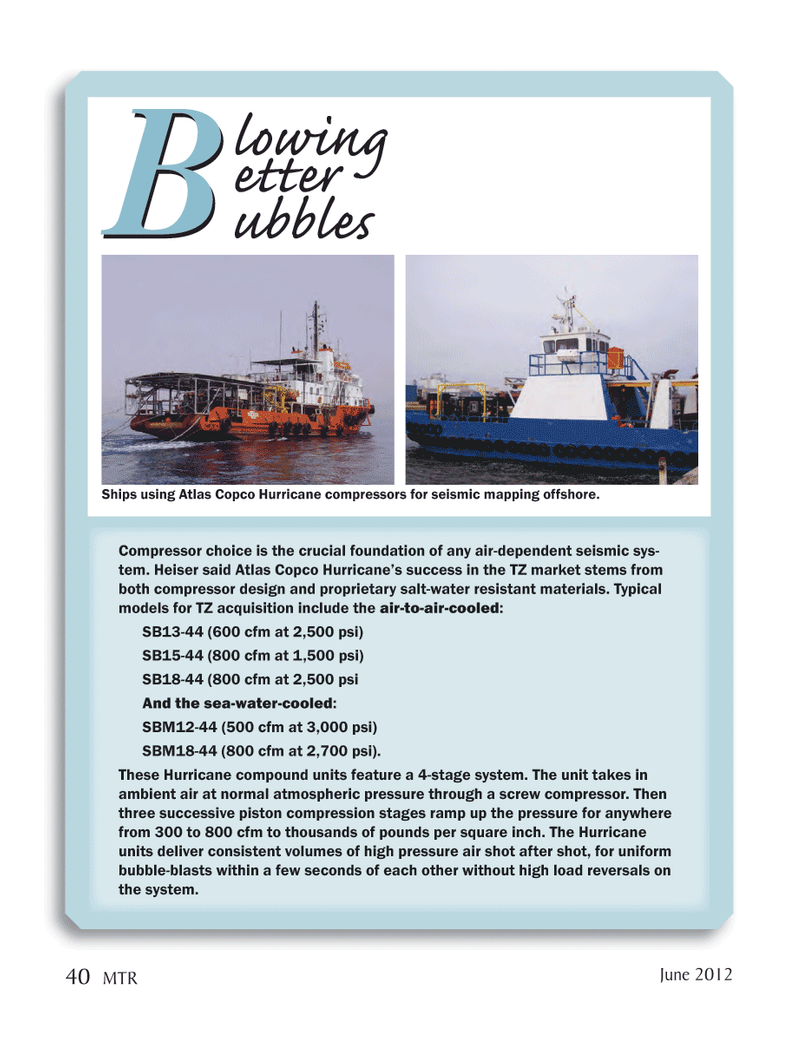
Page 40: of Marine Technology Magazine (June 2012)
AUV Arctic Operations
Read this page in Pdf, Flash or Html5 edition of June 2012 Marine Technology Magazine
Compressor choice is the crucial foundation of any air-dependent seismic sys- tem. Heiser said Atlas Copco Hurricane?s success in the TZ market stems from both compressor design and proprietary salt-water resistant materials. Typical models for TZ acquisition include the air-to-air-cooled : SB13-44 (600 cfm at 2,500 psi) SB15-44 (800 cfm at 1,500 psi) SB18-44 (800 cfm at 2,500 psi And the sea-water-cooled :SBM12-44 (500 cfm at 3,000 psi) SBM18-44 (800 cfm at 2,700 psi). These Hurricane compound units feature a 4-stage system. The unit takes in ambient air at normal atmospheric pressure through a screw compressor. Then three successive piston compression stages ramp up the pressure for anywhere from 300 to 800 cfm to thousands of pounds per square inch. The Hurricane units deliver consistent volumes of high pressure air shot after shot, for uniform bubble-blasts within a few seconds of each other without high load reversals on the system. Ships using Atlas Copco Hurricane compressors for seismic mapping offshore. BBlowing lowing etter etter ubbles ubbles June 201240 MTRMTR #5 (34-49).indd 40MTR #5 (34-49).indd 405/31/2012 10:23:44 AM5/31/2012 10:23:44 AM

 39
39

 41
41
